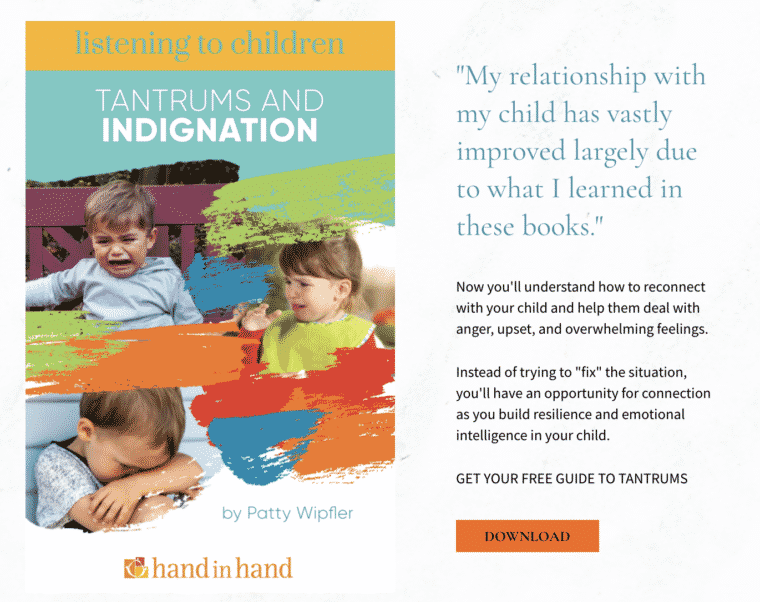As a parent, should you be strict or non-strict?
What do kids need to thrive?
Parenting is often overly simplified in this dualistic way.
You’re either strict or you’re not, with very little consideration for the large grey area in between. If one could place these two descriptions on a parenting scale, one might see “strict” at the same end as authoritarian, and “non-strict” at the same end as permissive.
But let’s take a look at the grey zone in between.
The sweet spot lies between strict and non-strict parenting
It’s in this grey zone that we find a sweet spot, where relationships between parents and children thrive. It’s also in this grey zone where Hand in Hand Parenting’s authoritative tools and approach come into play. A place where parents and children meet each other in a connected, playful and respectful way.
When we look at Diana Baumrind’s four types of parenting styles, authoritative parenting is shown to result in better outcomes. While some aspects of it may be traditionally considered “strict” – such as high expectations and clear boundaries, you will also notice some “non-strict” features, such as warmth, support and encouragement.
Through my experience, and the experience of thousands of parents around the world, the Hand in Hand Parenting tools have provided an ideal framework for finding just that sweet spot in the relationship with our children. There is a great deal of value placed on setting and holding limits, while at the same time providing our children with the warm support they might need to navigate their emotions around the limits.
You don’t need raised voices, timeouts or punishments to raise good kids
These limits are set without raised voices, timeouts or punishment. They are set with the intention of partnering with our child to help them feel good again. Their feelings are seen and heard, while our expectations are clearly communicated. They are strict, because you hold to them, but they are non-strict because they are communicated with love and warmth.
Limits can also be set playfully and with laughter that’s useful to release emotional tension and deepens the connection between parent and child. We often “chase” these giggles through Playlistening.
Try setting your child up to take the lead
By creating times where you intentionally take on the less powerful role in the parent-child dynamic, your child has the chance to step into their power. They can let go of the frustrations and upsets that happen as they learn to be human in this world.
Children benefit when they get the chance to regularly lead interactions between themselves and their adult caregivers like this.
As parents, we can set aside time specifically for this using a tool called Special Time. It is a powerful way of letting a child take the lead and a powerful way for us to see what is on their minds and in their hearts.
This time also fills up a child’s emotional cup and strengthens the connection between an adult caregiver and the child.
Wait, isn’t this too permissive?
Now, if you looked at Playlistening and Special Time from the dualistic lens of “strict vs non-strict”, you might place them in the non-strict category. Many parents express some concern around these warm tools, thinking they may be too permissive.
Letting children take the lead during play and meeting off-track behaviour with laughter and fun can seem like you're giving them a lot of power. You could fear losing their respect or your control of a situation.
What you're actually doing is intentionally using your calm, warmth and love to send the message that all is well.
This in turn helps their brains regain a sense of cohesion and regulation and strengthens the connection between child and caregiver.
Your own wants and expectations need a space too
All of this may seem like a lot to navigate – and let’s face it, parenting itself is a lot to navigate – which is why Hand in Hand Parenting has a tool specifically to support parents. Regularly engaging in Listening Partnerships with other parents offers a unique space to offload the emotional load, and provides opportunities to feel seen, heard and held ourselves.
It’s amazing how this process frees up our minds and hearts to be the parents we want to be with our kiddos, and how it gives us the space to work on and heal our own hurts.
Bring love and limits
What Hand in Hand Parenting tools provide is both the freedom and scope to parent in a way that feels right to each individual parent-child relationship.
I am constantly working at finding that sweet spot “in the grey”, where my children and I connect with love and authenticity. A place where they feel nurtured and guided and where I hold expectations lovingly.
So, when I’m asked if I’m a strict or a non-strict parent, I would say I am both and neither.
Got Tantrums To Tame?
Tough moments don't have to divide you. This guide shows you why tantrums happen and how to handle your child's anger and upsets calmly and with confidence. Download it here.


